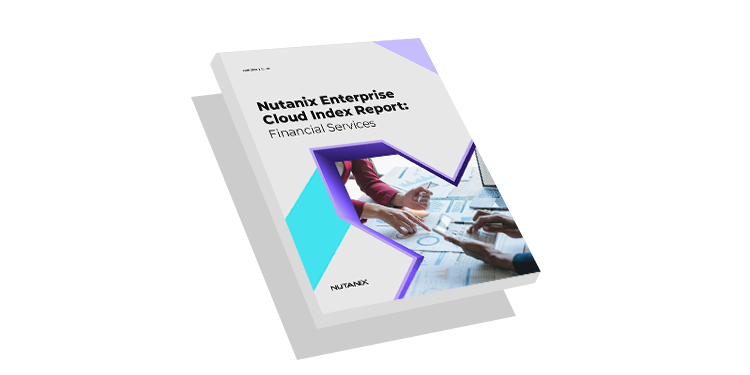Hybrid Multicloud: The Future Standard for Financial Services and Insurance IT
The financial services and insurance (FSI) sector is rapidly transitioning towards hybrid multicloud environments, driven by key priorities like security, AI, cost management, and sustainability. The Nutanix 6th Annual Financial Services ECI report delves into the motivations and challenges behind these trends.
Hybrid Multicloud Takes Center Stage
After slow growth last year, hybrid multicloud adoption in the FSI sector is now surging. The report projects nearly a fourfold increase over the next three years, establishing hybrid multicloud as the primary IT model for financial services and insurance (FSI). This is evident in the rising adoption rates, when asked about FSI Operating Models in Use and Planned, with hybrid multicloud usage expected to jump from 18% to 50% within the next 1-3 years.This trend reflects the industry's strategic move towards integrating private infrastructure with multiple public cloud platforms.
Other market surveys and reports corroborate this decisive trend. Most recently, Wall Street and Technology’s F5 Survey found that 71% of financial services organizations have embraced multi-cloud approaches. Forrester’s "The State Of Cloud In Financial Services, 2023" reveals an even higher adoption rate, with 90% using hybrid cloud solutions. Additionally, Reply’s "Cloud Adoption in Financial Services" underscores the importance of a tailored approach, emphasizing the integration of multicloud and hybrid cloud strategies.
As there’s a clear shift toward hybrid mulicloud in the financial services sector, we're witnessing similar trends in other highly regulated industries like Healthcare and the Public Sector. Flexera’s cloud report further confirms the widespread adoption of hybrid and multicloud across all industries.
This shift isn't just about technology; it entails establishing a highly adaptable and efficient operational framework tailored to the demands of modern financial services. The increasing preference for hybrid environments reflects the necessity for flexibility, robust security, resiliency, and cost-effectiveness.
Key Drivers of Hybrid Multicloud Adoption
Enhanced Security and Compliance: One of the primary drivers behind hybrid multicloud adoption is the environment's enhanced security and compliance capabilities. With cyber threats becoming more sophisticated, the financial sector has found itself in the crosshairs, with ransomware attacks increasing by 73% from 2022 to 2023. The ability to implement robust security and operational resilience measures, such as air gap backups and immutable storage solutions, has become critical. These measures ensure rapid recovery and minimize downtime, protecting sensitive financial data from breaches.
Regulations like the European Union's Digital Operational Resilience Act (DORA) further emphasize robust security and resiliency practices, making hybrid multicloud a top priority for CIOs across the EU and global banks operating in the region.
Optimized Cost Management: Cost management is another significant factor. With 17% of financial services IT leaders highlighting it as a top concern, hybrid multicloud solutions provide diverse billing and consumption options that optimize IT expenditures while maintaining high performance and security standards. This flexibility is essential for financial institutions looking to balance cost efficiency with the need for robust IT infrastructure.
Unlocking the Power of AI: AI integration also plays a pivotal role in this shift. The financial sector is increasingly leveraging AI to enhance decision-making, customer experiences, and risk management.
Hybrid multicloud environments facilitate the deployment of AI applications across diverse infrastructures, ensuring optimal performance and scalability and chief amongst them control. This integration allows financial institutions to harness the power of AI to drive innovation and stay competitive in a rapidly changing market.
Sustainability as a Priority: Sustainability has emerged as a significant criterion for selecting IT infrastructure, with 15% of financial services respondents prioritizing it. Hybrid multicloud environments can enable organizations to reduce their carbon footprint by optimizing resource usage, reducing overall footprints and energy use. This focus on sustainability aligns with broader industry trends and regulatory pressures to adopt more environmentally friendly practices.
Challenges and Solutions in Hybrid Multicloud Environments
While hybrid multicloud offers numerous benefits, it also presents challenges related to interoperability, security, and application and data management. Managing multiple IT environments can lead to inconsistencies and duplicated efforts. To address these hurdles, FSIs need to adopt integrated, universal infrastructure, application and data management and monitoring tools. These tools ensure seamless operations across diverse infrastructures, abstracting away complexities and empowering IT personnel to work more efficiently.
Security and compliance remain top priorities as the expansion of hybrid multicloud environments increases the attack surface. Continuous enhancements to security posture are necessary to protect against evolving threats. The industry must also facilitate application portability across varied infrastructures. Technologies like containerization are playing a significant role in enabling seamless application migration and mobility, aligning closely with the goals of hybrid multicloud strategies.
Final Thoughts
As hybrid multicloud becomes the new standard in the sector, IT leaders must prioritize interoperability, security, and application and data portability to maximize the benefits of this transformative trend. Our full 6th Annual Financial Services ECI report dives into more details on CIO priorities, adoption trends, and challenges - that we encourage you to benchmark against your peers. To thrive in the ever-shifting financial landscape, embracing cloud-smart strategies and advanced technologies will empower FSIs to navigate the complexities of their IT infrastructure, unlocking a new era of agility, security, and efficiency.
©2024 Nutanix, Inc. All rights reserved. Nutanix, the Nutanix logo and all Nutanix product and service names mentioned herein are registered trademarks or trademarks of Nutanix, Inc. in the United States and other countries. All other brand names mentioned herein are for identification purposes only and may be the trademarks of their respective holder(s). Certain information contained in this presentation may relate to, or be based on, studies, publications, surveys and other data obtained from third-party sources and our own internal estimates and research. While we believe these third-party studies, publications, surveys and other data are reliable as of the date of this paper, they have not independently verified unless specifically stated, and we make no representation as to the adequacy, fairness, accuracy, or completeness of any information obtained from third-party sources.
